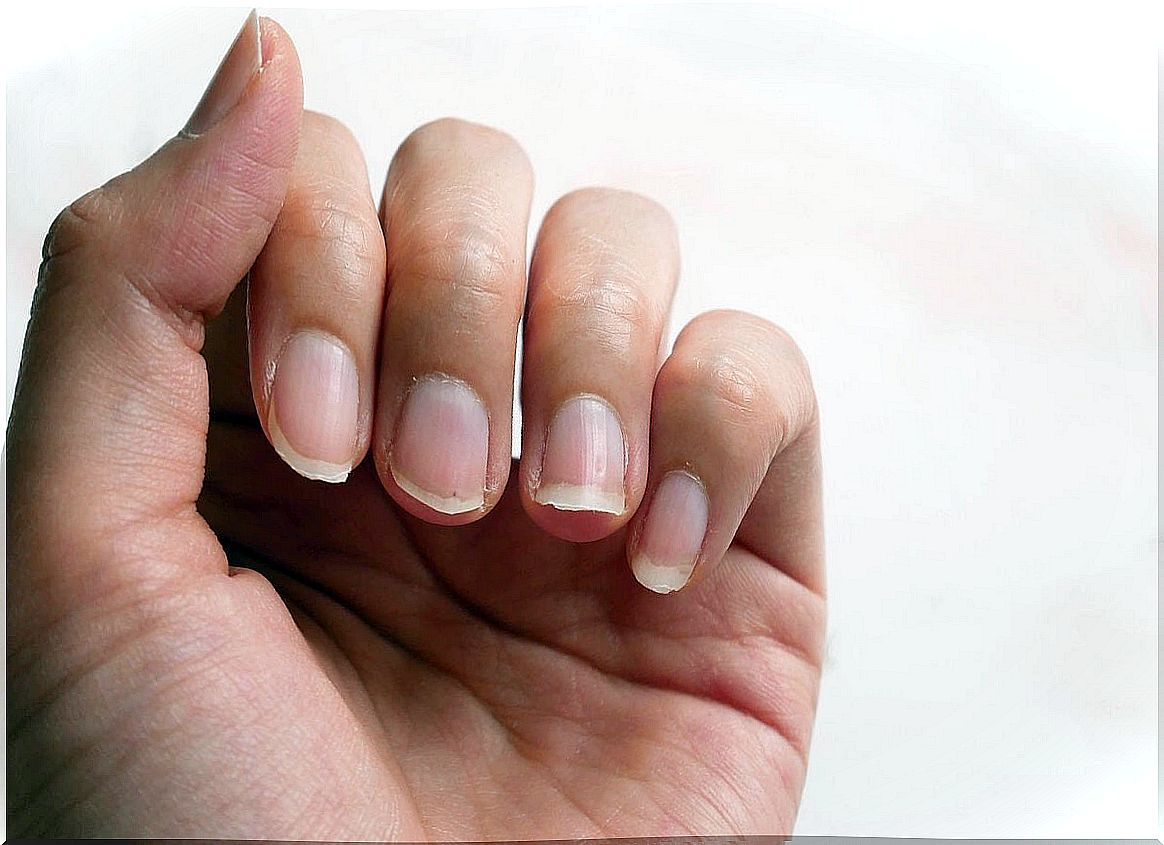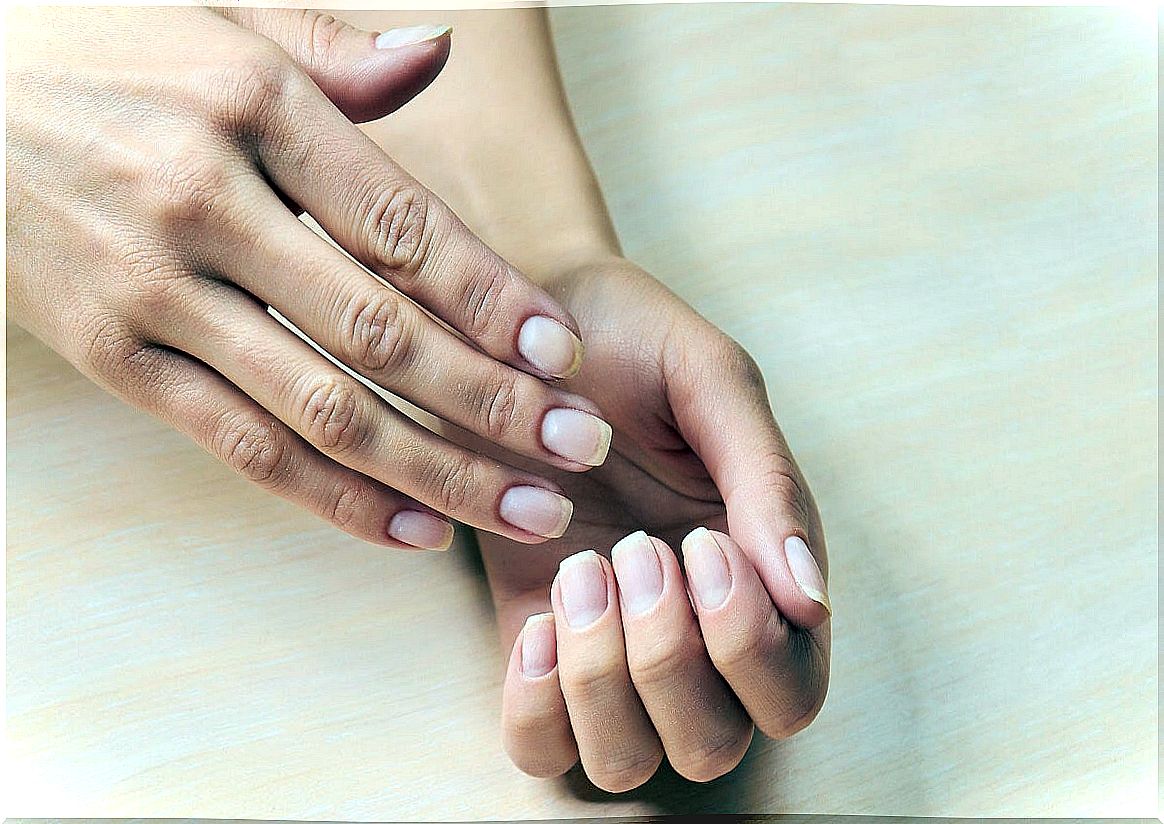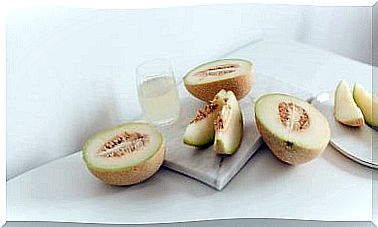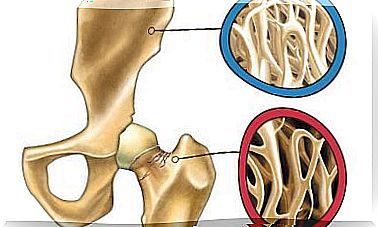What Is Onychorrhexis And What Is Its Treatment?
Many people don’t pay as much attention to their nails as they do to other parts of the body. Big mistake! Sometimes alterations in the nail bed are indicative of systemic conditions. For this reason, below we want to address a topic that not everyone knows: onychorrhexis. Do you know what it is and what its treatment is like?
Before going into detail, it is convenient to remember what the nail matrix is. An easy way to define it is as the area on which the nail forms and rests. In turn, this is responsible for its growth and, therefore, any affectation it suffers leads to problems.
What is onychorrhexis?
Onychorrhexis is a symptom that is part of the so-called «brittle nail syndrome». It is defined as the appearance of longitudinal grooves or fissures in the distal part of the nail, which extend towards the proximal edge, in one or more of them. It can occur on both the hands and the feet.
When it occurs severely, the cracks can cover up to 70% of the nail surface. Generally speaking, this occurs when the womb completely or partially ceases its growth function. Although its presence is more common in women, men can also suffer from it.
Unfortunately, it is a condition that does not have a single pattern of presentation, since in many people it causes other symptoms that go beyond the fissures. We detail them below.
Nail weakness
The presence of cracks in the nails will cause a constant feeling of weakness in them. Similarly, it will make them more prone to injury. Added to this, being a condition that stems from brittle nails syndrome, it will cause difficulty in its growth.

Presence of cracks in one or more nails
While some people have signs of onychorrhexis in a single nail, others may notice it in several at the same time. The distribution will help doctors determine a possible cause and its respective treatment. In case of being in a single nail, you can suggest something external or local.
Meanwhile, if the fissures are in all the nails, both on the hands and on the feet, the suspicion will be directed towards a possible internal or systemic origin. If so, the doctor may suggest additional tests.
Changes in the coloration of the fissures
We must bear in mind that having a fissure in the nail represents a gateway for various pathogens. Thus, fungi or bacteria can easily enter and cause an infection. Consequently, it also produces a change in the pigmentation of the area.
On the other hand, a common cause of onychorrhexis is peripheral vascular alterations. These can cause trophic changes in the skin, including changes in pigmentation. Therefore, the nail acquires a coloration that can be pale or cyanotic.
Total breakage and detachment of the nail
If the onychorrhexis is not treated in time, the fissure may progress sufficiently to reach the proximal edge of the nail plate. This only occurs in the most severe cases , and usually causes the complete breakage of the nail.
In very rare cases, the fissures can be transverse and appear in the proximal part of the nail. In this case, if it is allowed to progress, it could cause onychomadesis, that is, the total detachment of the nail.
Causes of onychorrhexis
Onychorrhexis can have multiple causes; however, one of the most common is aging. In fact, this is the most frequent nail alteration in the elderly, even in the total absence of other diseases.
In the younger population, on the other hand, this alteration may be the product of some nutritional deficiency. Lack of some vitamins, such as A, B6, B7, B12, C and D, can lead to nail weakness and stretch marks. It can also occur from a deficiency of iron and other minerals.
Among other causes of onychorrhexis we can find the following:
- Peripheral vascular disorders.
- Exposure to chemicals (detergents, solvents, thioglycollates, cuticle removers).
- Repeated trauma.
- Drug use (acitretin, antiretrovirals).
- Dermatological diseases (psoriasis, lichen planus, pityriasis rubra).
- Endocrine and systemic diseases (hypothyroidism, anemia).

Treatment of onychorrhexis
Treatment for this symptom can vary depending on its cause. However, it is similar in all cases. When the specific cause that is causing it is known, this pathology must be attacked to reverse it.
- In the case of nutritional deficiencies, medical treatment will be based on adapting the diet to restore the body’s deficiencies. In addition, the efficacy of oral administration of biotin (B7) and iron has been shown to treat onychorrhexis regardless of its cause.
- In those cases whose cause is not specific, medical treatment will be aimed at hydrating and hardening the fingernails and toenails. The use of emollient products and moisturizers will be indicated to increase water retention.
- A home treatment that seems to serve as an adjunct in these cases is the use of cyanoacrylate-based acrylics. It should be applied to the distal part of the affected nail, then covered with a piece of paper or cloth. Later, it will be sealed again with the acrylic.
- Massages are also recommended to improve blood circulation.
How to prevent onychorrhexis?
Proper care of the nails of the hands and feet will avoid the appearance of multiple alterations such as onychorrhexis. A unidirectional nail trimming and constant hydration of the same is important to guarantee its good growth and development.
If there is any type of alteration, it is advisable to seek timely treatment to avoid complications such as weakening and breakage. Likewise, it is advisable to see a doctor to rule out an underlying disease.









